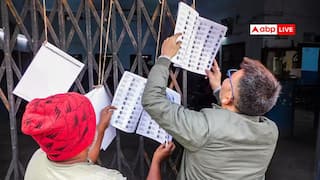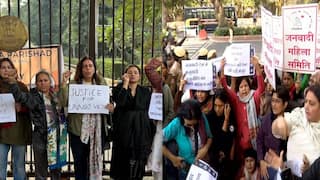Army On Front Foot On Agnipath: Adjutant General Tears Down Criticisms, From Job Security To Compensation
In interview to ANI, Lt Gen. Channira Bansi Ponnappa says the Agnipath scheme represents a transformational reform in the Indian Army’s manpower and recruitment policy.

Agnipath Scheme: The Agnipath scheme has faced significant political and public scrutiny since its inception in June 2022, with the criticisms ranging from job security concerns to the overall impact on the morale and professionalism of the armed forces. In light of these concerns, Lieutenant General Channira Bansi Ponnappa, Adjutant General of the Indian Army, provided a detailed overview of the scheme in a recent interview with ANI, outlining its benefits and addressing various allegations made by detractors.
‘Transformational Reform’
Lt Gen. Ponnappa said the Agnipath scheme represents a transformational reform in the Indian Army’s manpower and recruitment policy. The scheme aims to create a youthful and future-ready force capable of handling modern technological and operational challenges. Since its launch, approximately 70,000 Agniveers have been inducted, trained, and deployed with frontline units. According to the General, feedback from the field indicates that these recruits are performing exceptionally well, matching – and even surpassing – the performance of their predecessors and counterparts from other recruitment schemes in some areas.
Concerns About Job Security And Skill Utilisation
One of the primary criticisms of the Agnipath scheme has been the perceived lack of long-term job security for recruits. Critics argue that the four-year tenure does not provide a stable career path, leaving these recruits uncertain about their future post-service. However, Lt Gen. Ponnappa highlighted the structured recruitment and training process, which includes rigorous training and deployment in various capacities. He noted that many Agniveers are performing on a par with regular soldiers and are well-integrated into their units.
Lt Gen. Ponnappa also addressed concerns about utilising skills acquired during the tenure. He explained that introducing advanced technology and simulators in training centres has enhanced the quality of training, making Agniveers better prepared for their roles. This, he argued, would positively impact their future employment opportunities, both within and outside the armed forces.
Enhancements In The Recruitment Process
The scheme has also reformed the recruitment process to enhance transparency and efficiency, the General said. Lt Gen. Ponnappa described the introduction of an online examination as the first step in the recruitment process, replacing large, unwieldy rallies. This change has significantly reduced the potential for fraud and scams, making the process more transparent and manageable, he said. The recruitment process is now fully automated through the ‘Join Indian Army’ website and the ‘E-recruits’ software, ensuring a smooth transition from recruitment to training.
Compensation And Support
Recent political controversies, such as the case of Agniveer Ajay Kumar, who was killed in a landmine explosion, have further fueled the debate around the scheme. Rahul Gandhi, the Leader of the Opposition, and other politicians accused the government of failing to provide adequate compensation to Kumar’s family. However, Lt. Gen Ponnappa reiterated the Army’s commitment to honouring its fallen soldiers. He clarified that Kumar’s family had already received Rs 98.39 lakh out of the total Rs 1.65 crore due, with the remaining amount to be paid following final account settlement and police verification.
Integration And Performance Of Agniveers
Lt Gen. Ponnappa emphasised the successful integration of Agniveers into the Army. He said the feedback from Commanding Officers (COs), Junior Commissioned Officers (JCOs), and Non-Commissioned Officers (NCOs) has been overwhelmingly positive. Agniveers are reportedly performing well in both operational and professional duties, with some excelling in physical and academic parameters compared to traditional recruits.
Future Prospects And Automation
The Army has also implemented new systems like the Army Software for Agnipath Administration and Networking (ASAAN) and Indian Army Data Repository and Analytics (Indra) to streamline the administration and monitoring of Agniveers. These systems ensure transparency and efficiency in managing the recruits’ data, performance assessments, and timely payment of dues.
By highlighting the scheme’s transformative impact on recruitment, training, and operational efficiency, Lt Gen. Ponnappa addressed the major criticisms and highlighted the Army’s commitment to supporting its personnel and their families. As the scheme continues to evolve, it remains to be seen how these reforms will shape the future of India’s armed forces.
(Inputs from agencies)






































